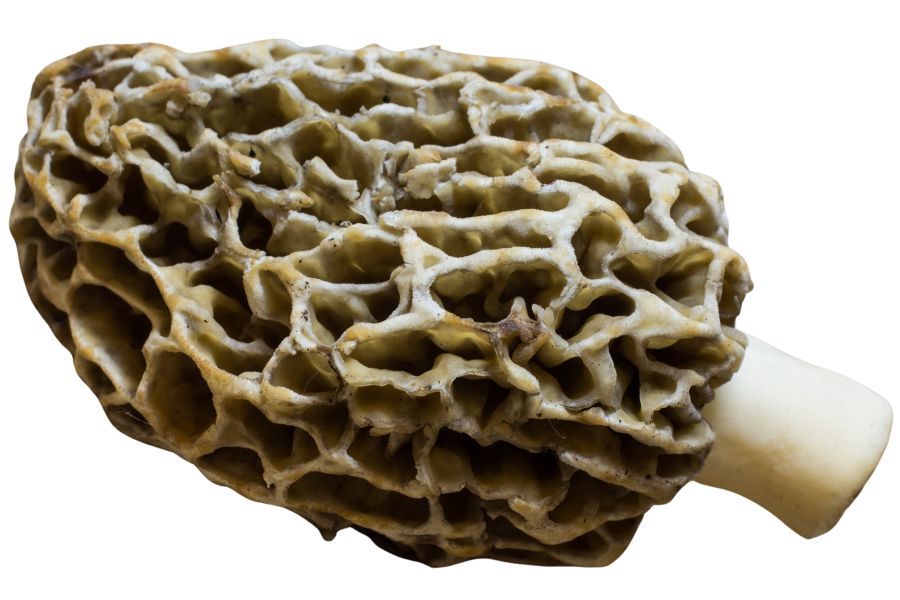There’s real value hiding in North Dakota’s woods, prairies, and riverbanks if you know what to gather. Elderberries grow thick in some areas, packed with flavor and useful for everything from syrup to wine. Jerusalem artichokes, often mistaken for just another wild sunflower, can be dug up and eaten like a nutty potato.
One of the state’s most recognizable edible flowers also happens to offer more than just flavor, and it’s easy to spot if you time things right.
Milkweed, when harvested properly, can provide several edible parts throughout the season. And when paired with the earthy, meaty texture of shaggy mane mushrooms, you’ve got the makings of a meal most people would walk right past.
These kinds of finds are scattered across the landscape, often growing in places you’d never think to check. There’s more variety out there than most people realize, and it’s worth learning just how many options North Dakota really offers.
What We Cover In This Article:
- What Makes Foreageables Valuable
- Foraging Mistakes That Cost You Big Bucks
- The Most Valuable Forageables in the State
- Where to Find Valuable Forageables in the State
- When to Forage for Maximum Value
- The extensive local experience and understanding of our team
- Input from multiple local foragers and foraging groups
- The accessibility of the various locations
- Safety and potential hazards when collecting
- Private and public locations
- A desire to include locations for both experienced foragers and those who are just starting out
Using these weights we think we’ve put together the best list out there for just about any forager to be successful!
A Quick Reminder
Before we get into the specifics about where and how to find these plants and mushrooms, we want to be clear that before ingesting any wild plant or mushroom, it should be identified with 100% certainty as edible by someone qualified and experienced in mushroom and plant identification, such as a professional mycologist or an expert forager. Misidentification can lead to serious illness or death.
All plants and mushrooms have the potential to cause severe adverse reactions in certain individuals, even death. If you are consuming wild foragables, it is crucial to cook them thoroughly and properly and only eat a small portion to test for personal tolerance. Some people may have allergies or sensitivities to specific mushrooms and plants, even if they are considered safe for others.
The information provided in this article is for general informational and educational purposes only. Foraging involves inherent risks.
What Makes Foreageables Valuable
Some wild plants, mushrooms, and natural ingredients can be surprisingly valuable. Whether you’re selling them or using them at home, their worth often comes down to a few key things:
The Scarcer the Plant, the Higher the Demand
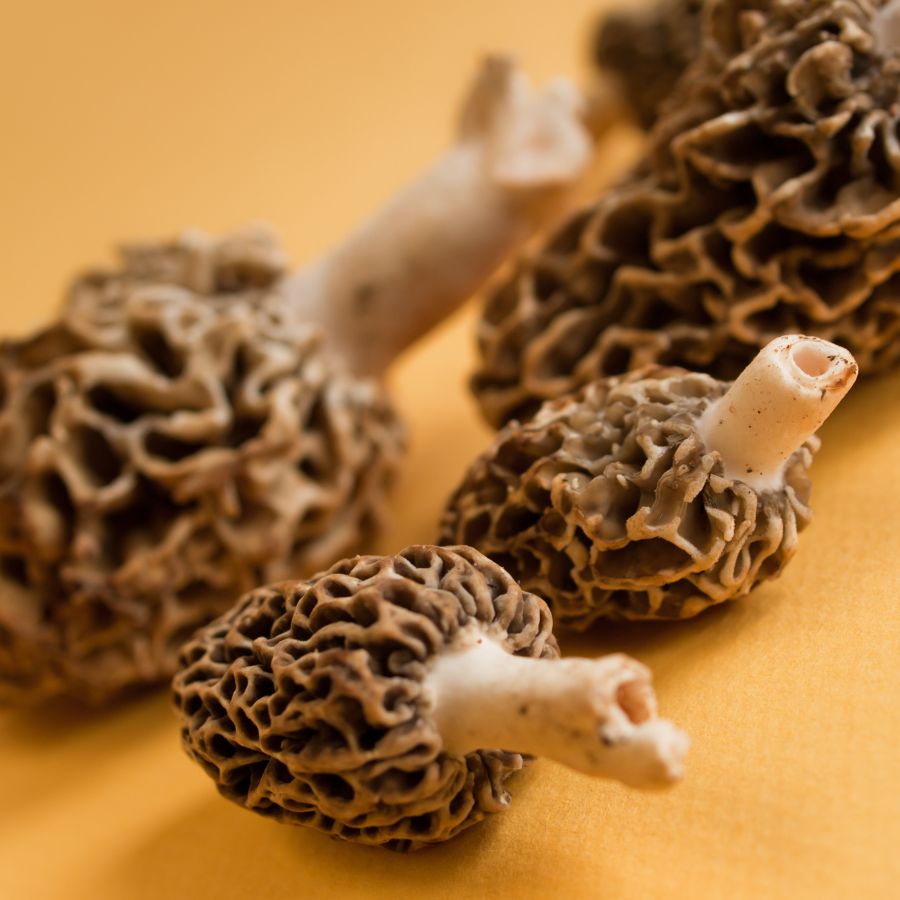
Some valuable forageables only show up for a short time each year, grow in hard-to-reach areas, or are very difficult to cultivate. That kind of rarity makes them harder to find and more expensive to buy.
Morels, truffles, and ramps are all good examples of this. They’re popular, but limited access and short growing seasons mean people are often willing to pay more.
A good seasonal foods guide can help you keep track of when high-value items appear.
High-End Dishes Boost the Value of Ingredients
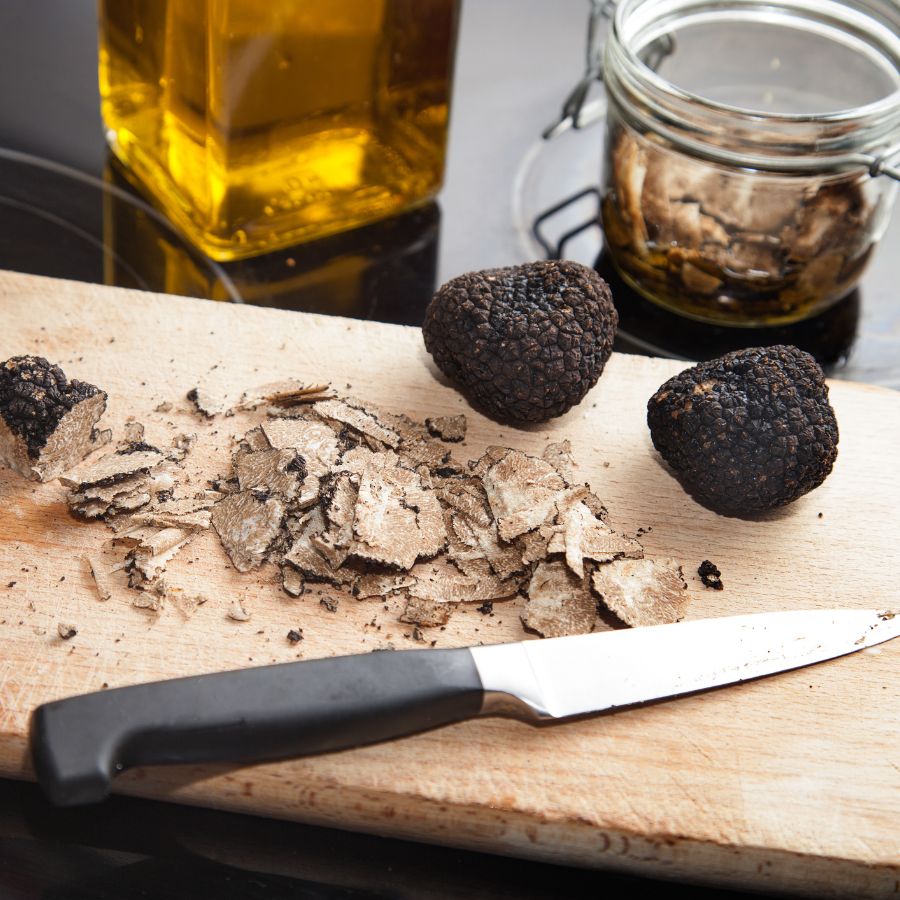
Wild ingredients that are hard to find in stores often catch the attention of chefs and home cooks. When something unique adds flavor or flair to a dish, it quickly becomes more valuable.
Truffles, wild leeks, and edible flowers are prized for how they taste and look on a plate. As more people try to include them in special meals, the demand—and the price—tends to rise.
You’ll find many of these among easy-to-identify wild mushrooms or herbs featured in fine dining.
Medicinal and Practical Uses Drive Forageable Prices Up
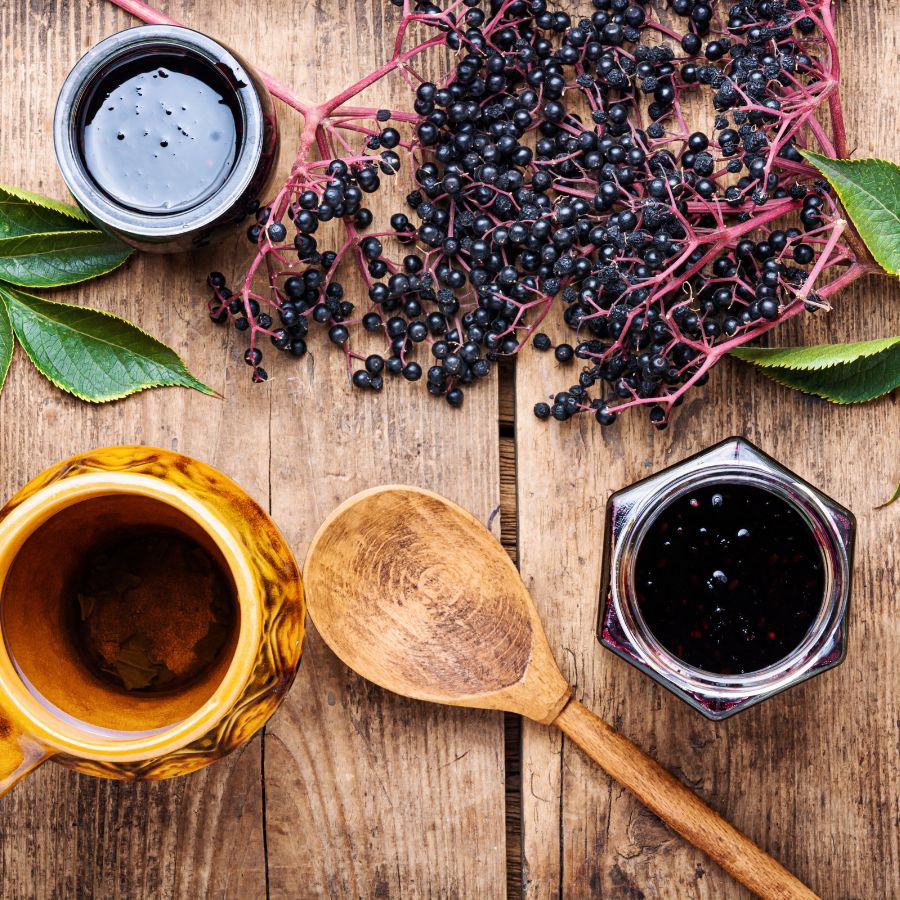
Plants like ginseng, goldenseal, and elderberries are often used in teas, tinctures, and home remedies. Their value comes from how they support wellness and are used repeatedly over time.
These plants are not just ingredients for cooking. Because people turn to them for ongoing use, the demand stays steady and the price stays high.
The More Work It Takes to Harvest, the More It’s Worth
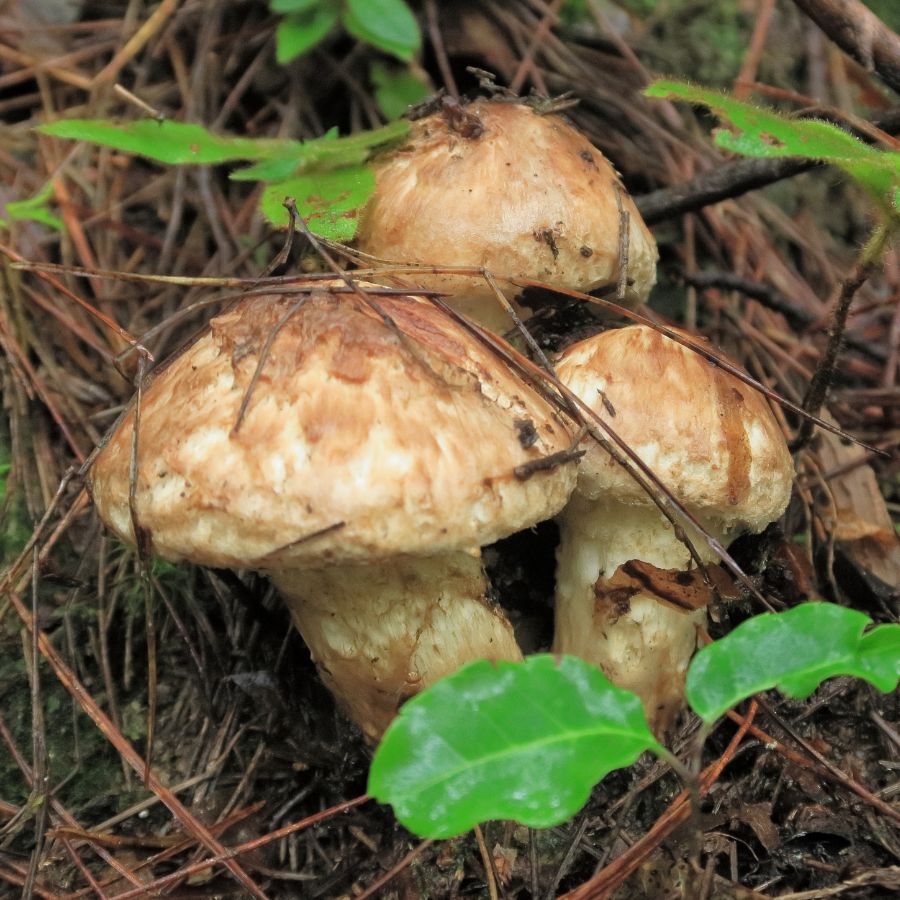
Forageables that are hard to reach or tricky to harvest often end up being more valuable. Some grow in dense forests, need careful digging, or have to be cleaned and prepared before use.
Matsutake mushrooms are a good example, because they grow in specific forest conditions and are hard to spot under layers of leaf litter. Wild ginger and black walnuts, meanwhile, both require extra steps for cleaning and preparation before they can be used or sold.
All of that takes time, effort, and experience. When something takes real work to gather safely, buyers are usually willing to pay more for it.
Foods That Keep Well Are More Valuable to Buyers
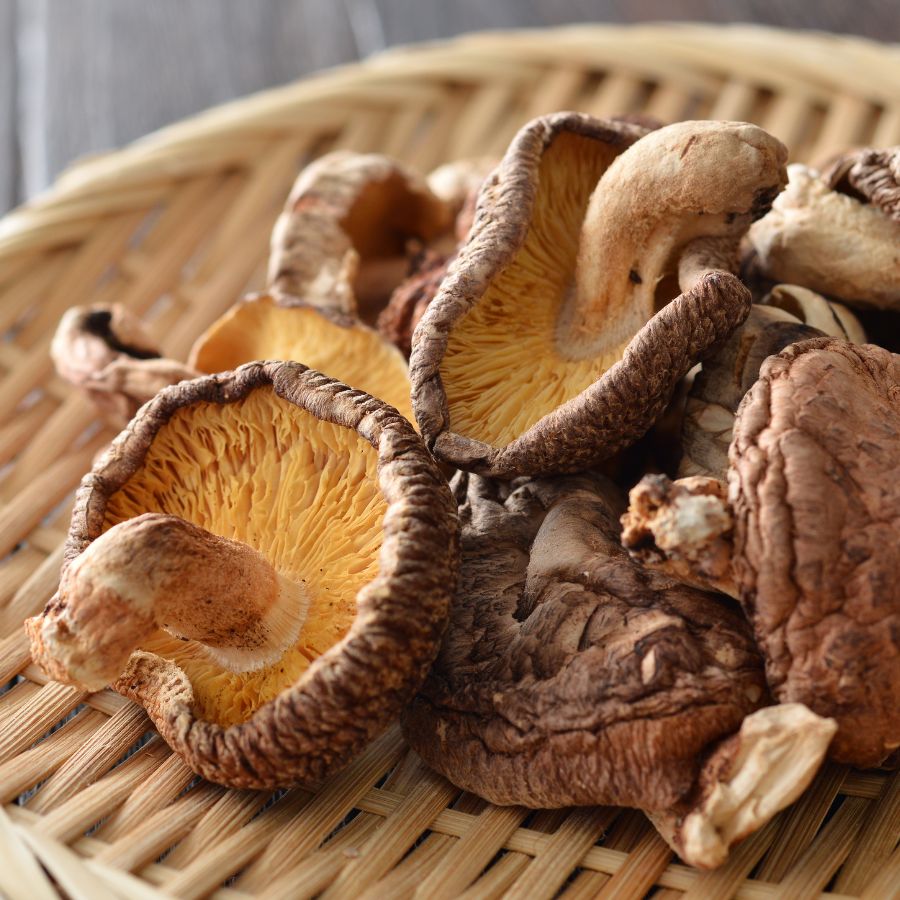
Some forageables, like dried morels or elderberries, can be stored for months without losing their value. These longer-lasting items are easier to sell and often bring in more money over time.
Others, like wild greens or edible flowers, have a short shelf life and need to be used quickly. Many easy-to-identify wild greens and herbs are best when fresh, but can be dried or preserved to extend their usefulness.
A Quick Reminder
Before we get into the specifics about where and how to find these mushrooms, we want to be clear that before ingesting any wild mushroom, it should be identified with 100% certainty as edible by someone qualified and experienced in mushroom identification, such as a professional mycologist or an expert forager. Misidentification of mushrooms can lead to serious illness or death.
All mushrooms have the potential to cause severe adverse reactions in certain individuals, even death. If you are consuming mushrooms, it is crucial to cook them thoroughly and properly and only eat a small portion to test for personal tolerance. Some people may have allergies or sensitivities to specific mushrooms, even if they are considered safe for others.
The information provided in this article is for general informational and educational purposes only. Foraging for wild mushrooms involves inherent risks.
Foraging Mistakes That Cost You Big Bucks
When you’re foraging for high-value plants, mushrooms, or other wild ingredients, every decision matters. Whether you’re selling at a farmers market or stocking your own pantry, simple mistakes can make your harvest less valuable or even completely worthless.
Harvesting at the Wrong Time
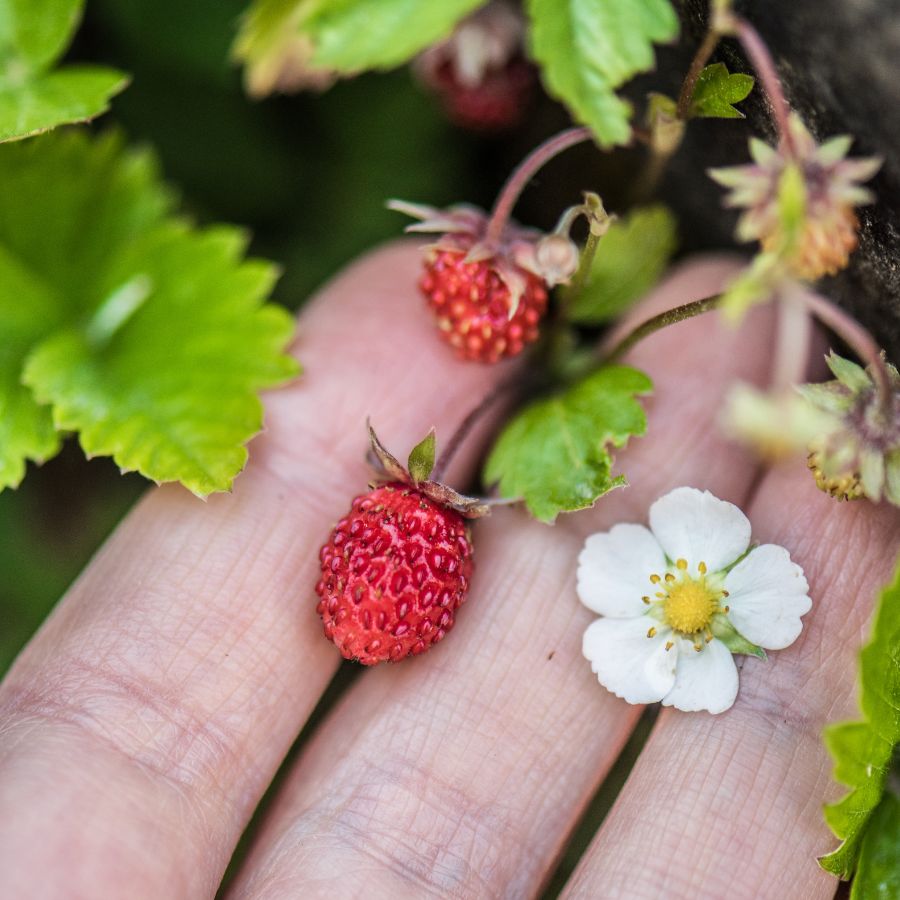
Harvesting at the wrong time can turn a valuable find into something no one wants. Plants and mushrooms have a short window when they’re at their best, and missing it means losing quality.
Morels, for example, shrink and dry out quickly once they mature, which lowers their weight and price. Overripe berries bruise in the basket and spoil fast, making them hard to store or sell.
Improper Handling After Harvest
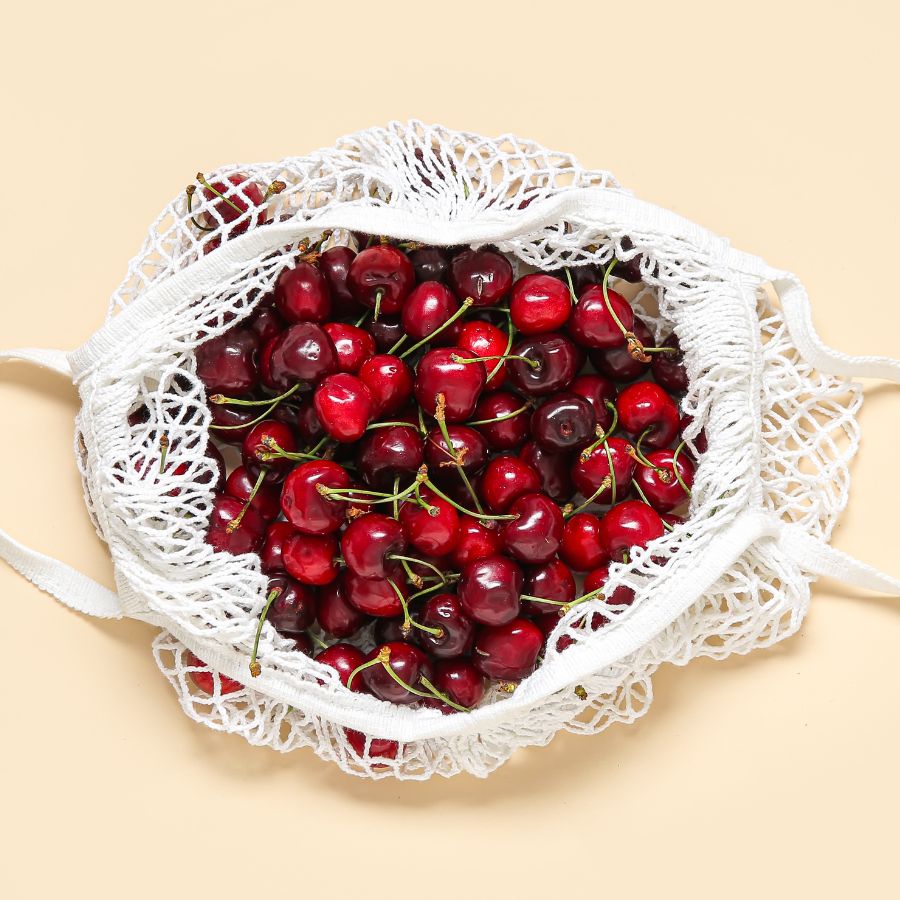
Rough handling can ruin even the most valuable forageables. Crushed mushrooms, wilted greens, and dirty roots lose both their appeal and their price.
Use baskets or mesh bags to keep things from getting smashed and let air circulate. Keeping everything cool and clean helps your harvest stay fresh and look better for longer.
This is especially important for delicate items like wild roots and tubers that need to stay clean and intact.
Skipping Processing Steps
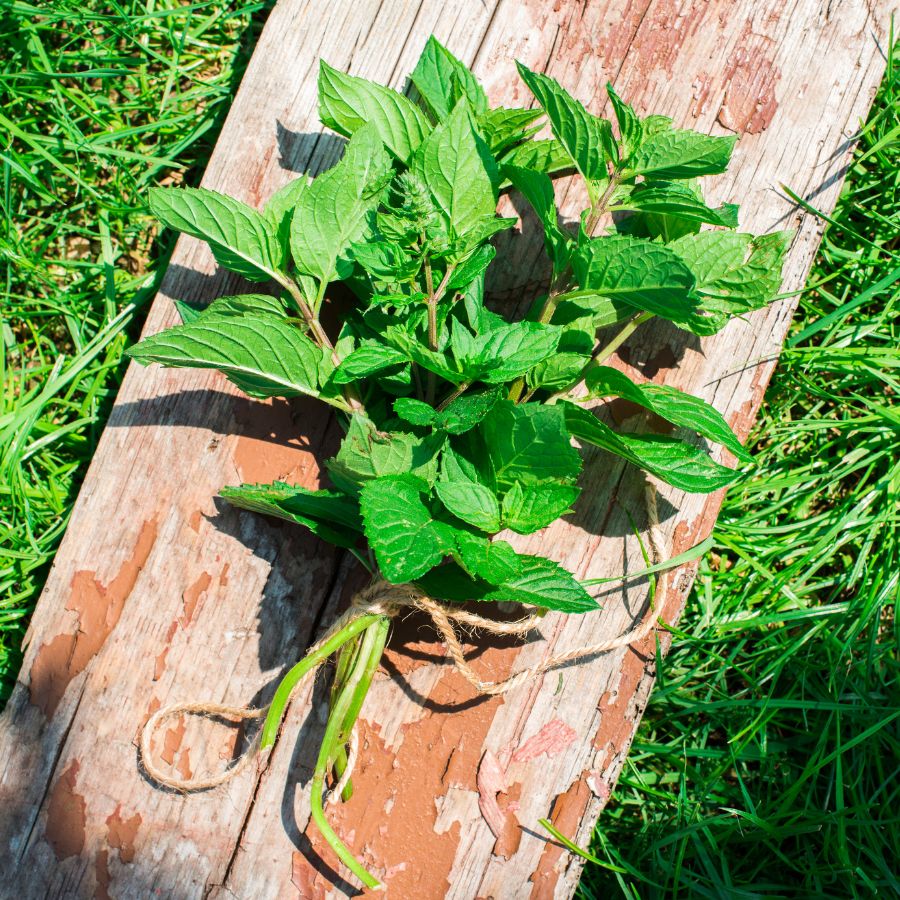
Skipping basic processing steps can cost you money. A raw harvest may look messy, spoil faster, or be harder to use.
For example, chaga is much more valuable when dried and cut properly. Herbs like wild mint or nettle often sell better when bundled neatly or partially dried. If you skip these steps, you may end up with something that looks unappealing or spoils quickly.
Collecting from the Wrong Area
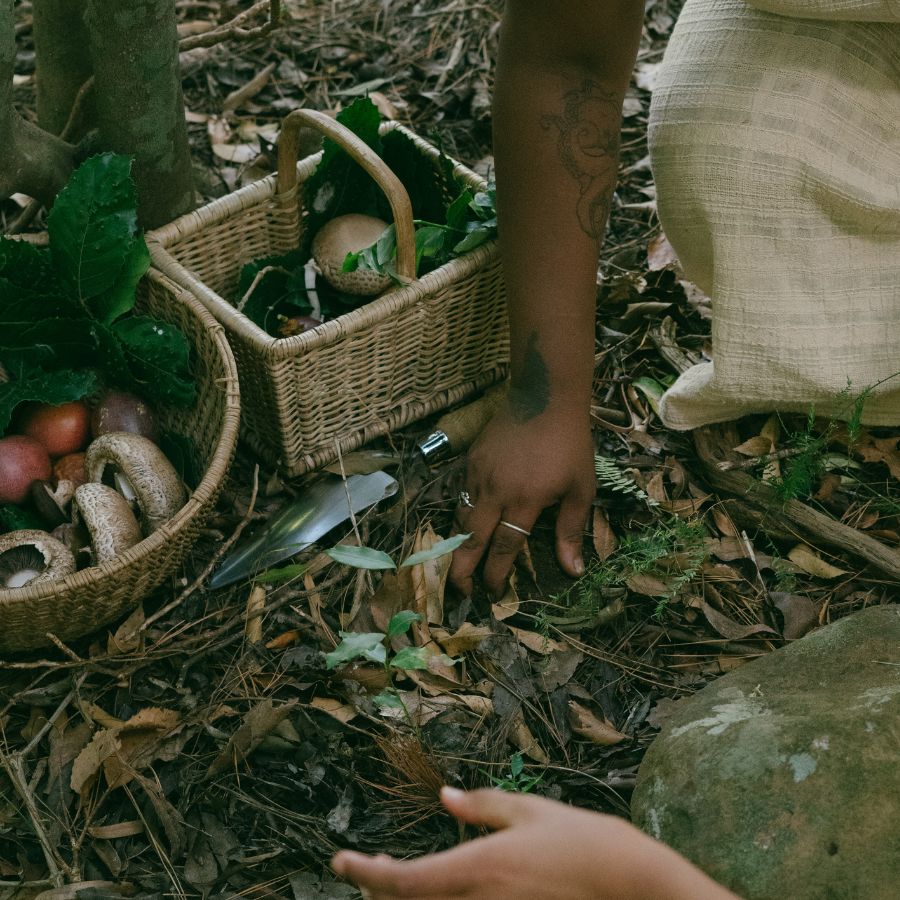
Harvesting in the wrong place can ruin a good find. Plants and mushrooms pulled from roadsides or polluted ground may be unsafe, no matter how fresh they look.
Buyers want to know their food comes from clean, responsible sources. If a spot is known for overharvesting or damage, it can make the whole batch less appealing.
These suburbia foraging tips can help you find overlooked spots that are surprisingly safe and productive.
Not Knowing the Market
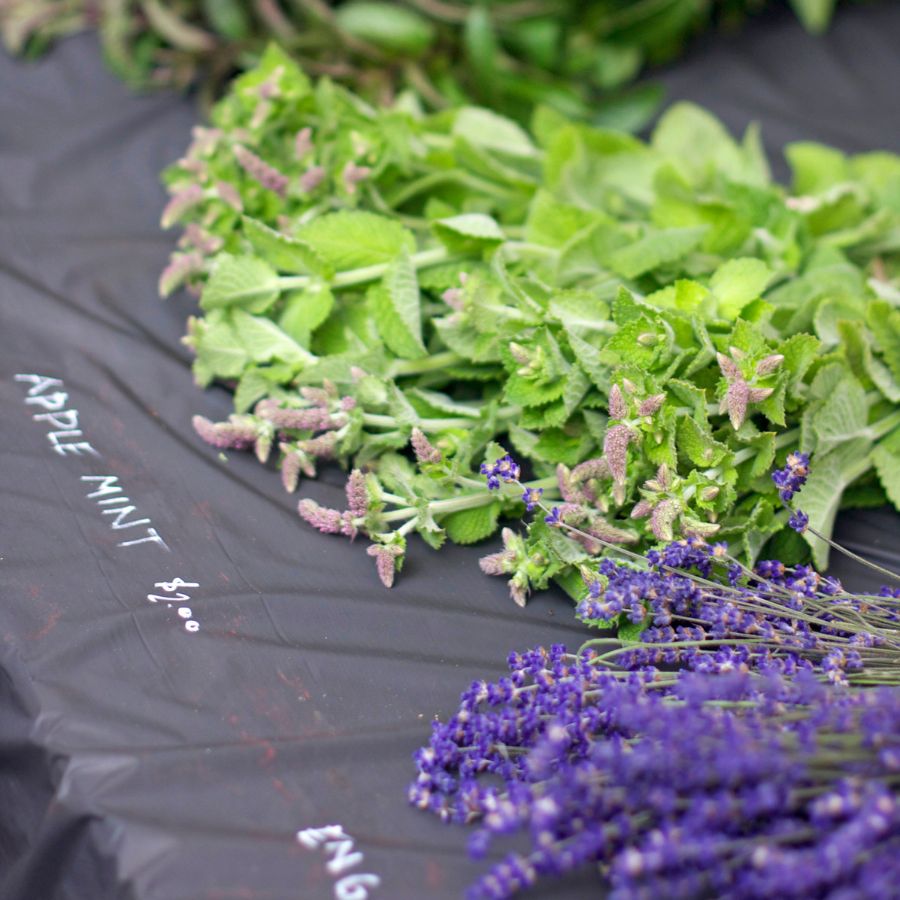
A rare plant isn’t valuable if nobody wants to buy it. If you gather in-demand species like wild ramps or black trumpets, you’re more likely to make a profit. Pay attention to what chefs, herbalists, or vendors are actually looking for.
Foraging with no plan leads to wasted effort and unsold stock. Keeping up with demand helps you bring home a profit instead of a pile of leftovers.
You can also brush up on foraging for survival strategies to identify the most versatile and useful wild foods.
Before you head out
Before embarking on any foraging activities, it is essential to understand and follow local laws and guidelines. Always confirm that you have permission to access any land and obtain permission from landowners if you are foraging on private property. Trespassing or foraging without permission is illegal and disrespectful.
For public lands, familiarize yourself with the foraging regulations, as some areas may restrict or prohibit the collection of mushrooms or other wild foods. These regulations and laws are frequently changing so always verify them before heading out to hunt. What we have listed below may be out of date and inaccurate as a result.
The Most Valuable Forageables in the State
Some of the most sought-after wild plants and fungi here can be surprisingly valuable. Whether you’re foraging for profit or personal use, these are the ones worth paying attention to:
Chokecherry (Prunus virginiana)

The fruit of chokecherry, also called bitter-berry or Virginia bird cherry, grows in dense clusters and ripens to a deep purple-black color. Its puckering taste is balanced out when cooked into jellies, syrups, or wine.
You can eat the skin and pulp, but the large pit inside contains toxic compounds and should never be consumed raw. Even the leaves and stems can be harmful if ingested.
Chokecherry has a tart, astringent flavor when fresh, but that changes entirely once heat and sugar are added. The texture softens nicely in jams and fruit leather.
The plant’s value comes from both its culinary uses and the fact that it grows abundantly in the wild. While not particularly high-priced, the fruits can still bring a decent return when sold in processed form.
American Plum (Prunus americana)
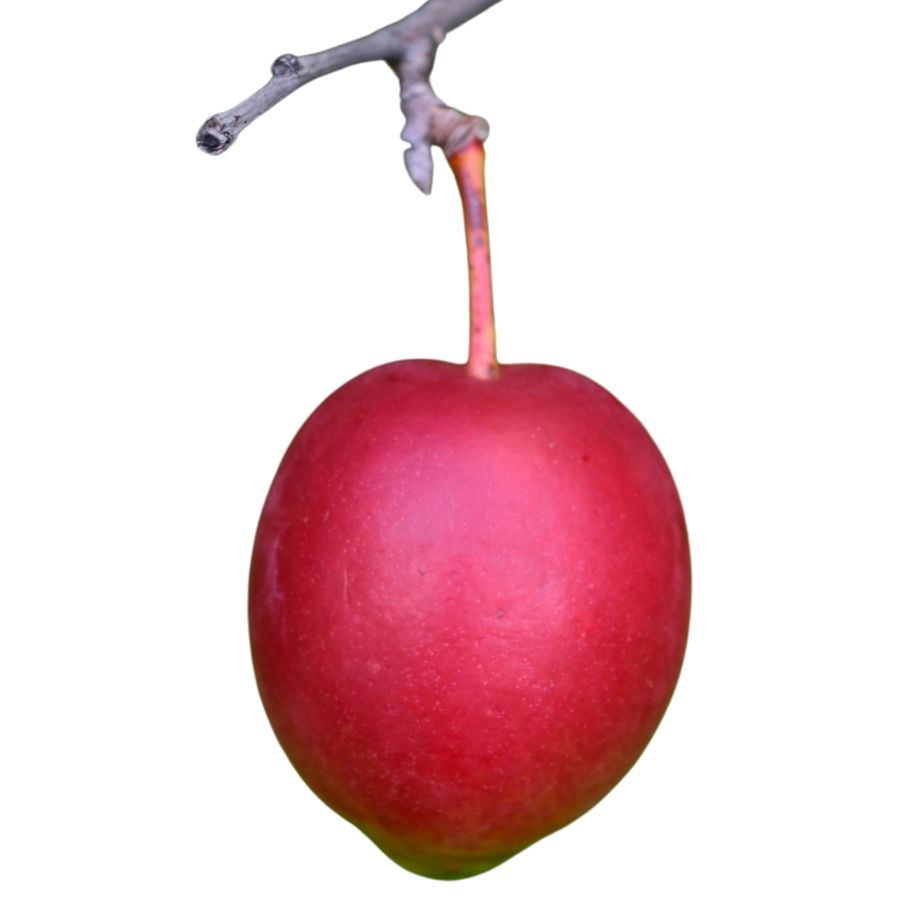
American plums grow on small trees and produce fruit that ranges from deep red to bluish-purple with a waxy coating. The skin is tart and a little astringent, but the flesh inside is sweet, soft, and juicy when fully ripe.
You can eat the fruit fresh, but it’s more often cooked down into jelly, jam, or syrup. The pits are not edible and should always be discarded.
Some cherry species grow in similar clusters, but cherries tend to be smaller, rounder, and darker with smoother bark. American plum leaves also have a rough texture that helps separate them from other lookalikes.
These plums are valuable in small markets, especially when turned into preserves or wine. Individual trees can yield a good harvest, but the fruit is delicate and doesn’t store long.
Morel (Morchella spp.)
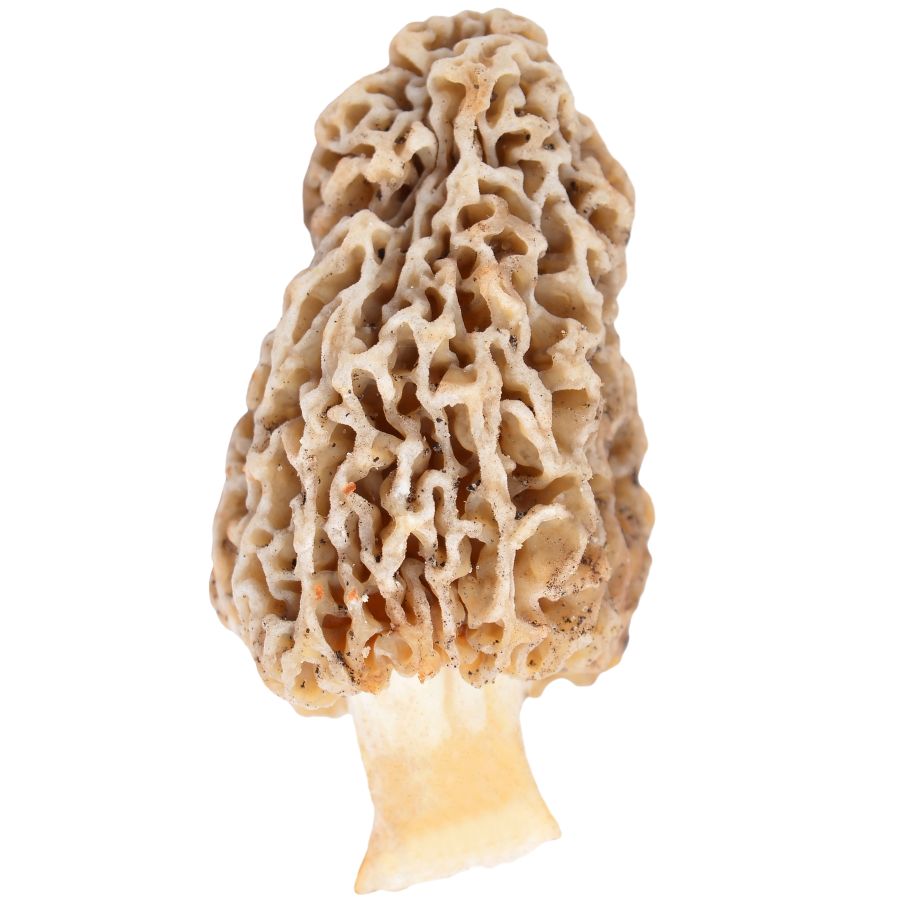
Morel mushrooms have a honeycomb-like surface with deep pits and ridges. The cap is fully attached to the stem, which helps set them apart from dangerous lookalikes like false morels that often have wrinkled, lobed caps and loose or cottony interiors.
The rich, nutty flavor and slightly chewy texture make morels a favorite in high-end kitchens. Many people sauté them in butter, stuff them, or dry them for later use because they hold their flavor extremely well.
Always cook morels thoroughly because raw ones can cause stomach upset, even when they look perfectly normal.
Morels are highly prized by chefs and home cooks, sometimes selling for over $50 per pound fresh and even more when dried.
Part of what makes morels so valuable is how hard they are to cultivate and find. They often grow in specific, unpredictable places, and their short harvesting window drives up both the demand and the price.
Giant Puffball (Calvatia gigantea)
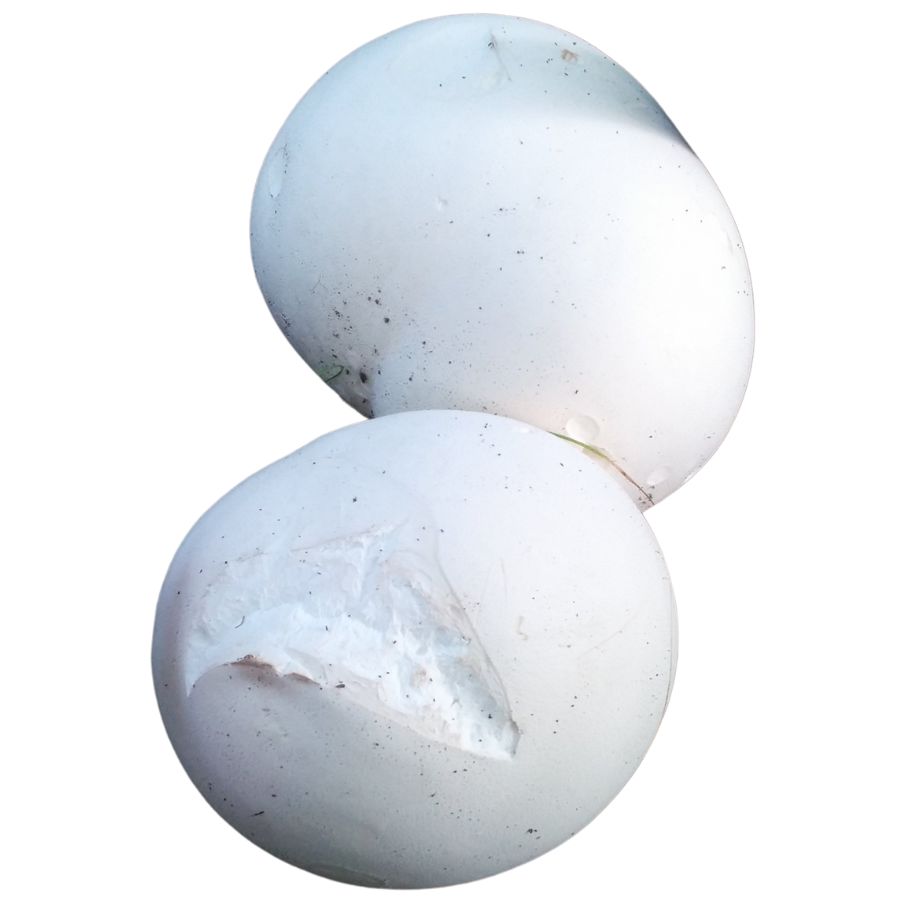
The giant puffball is a round, white fungus that can grow impressively large and has no visible stem or gills. Inside, it should be solid white and marshmallow-like; anything discolored means it’s past its prime.
Lookalikes include immature Amanita mushrooms, which are deadly, but those will reveal a cap and stem when sliced open. True puffballs are solid all the way through when young and edible.
Most people pan-fry slices in oil or butter, or bread and bake them like eggplant. The flavor is light and earthy, and the texture holds up surprisingly well in casseroles.
Only the white interior is safe to eat—the outer skin can be peeled, and the rest discarded if it’s not pure white. It’s not a high-dollar mushroom, but the sheer volume of edible mass makes one good puffball worth harvesting.
Milkweed (Asclepias syriaca)
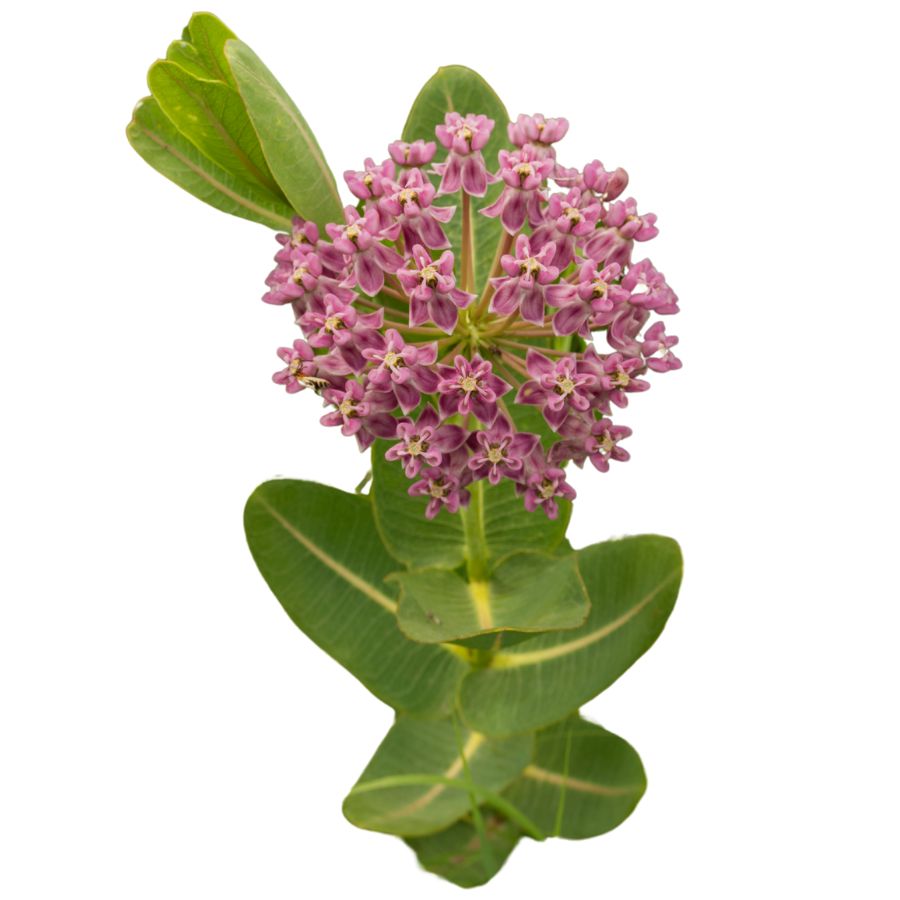
You’ll find milkweed growing in open fields, where it produces thick stems, wide green leaves, and heavy flower clusters. The unopened buds and tender pods are the most popular edible parts, though only after boiling them well.
It’s often confused with dogbane, which is poisonous and doesn’t produce the same sticky white sap when snapped. When cooked correctly, the pods become tender and taste a little like asparagus with a softer bite.
People usually prepare milkweed in soups, boiled side dishes, or even fried after parboiling to remove toxins. Boiling the parts in two or three rounds of water is the safest way to make them edible.
This plant isn’t widely sold commercially, but in local foraging communities, it’s a valued wild vegetable. If you’re careful with your identification and preparation, milkweed can be a surprisingly versatile wild food.
Shaggy Mane (Coprinus comatus)
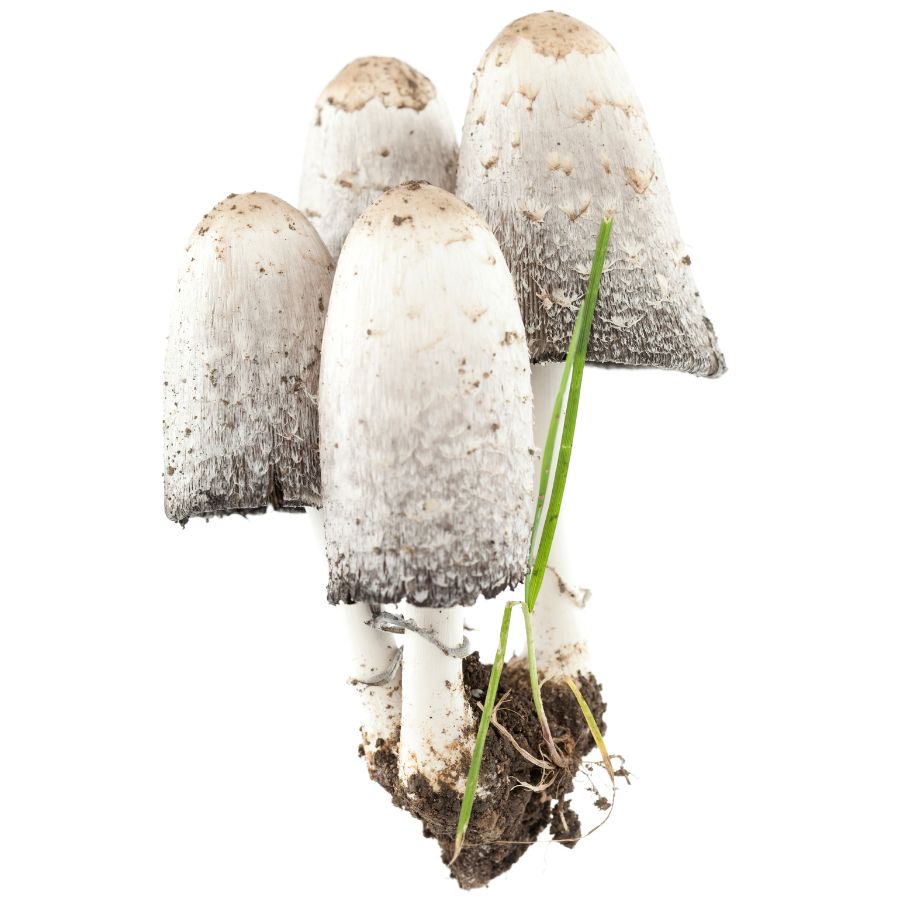
Shaggy mane mushrooms have tall, narrow caps covered in loose white scales that eventually melt into black liquid. When fresh and young, their caps are prized for their soft, silky texture and mild flavor.
They’re best cooked right after harvest—most people pan-fry them in butter or add them to creamy sauces where their subtle flavor can shine. Some people also freeze them pre-cooked to extend their usefulness, since raw ones don’t last long.
One thing to watch out for is the similar-looking common ink cap, which can cause digestive issues when combined with alcohol. You can tell them apart by looking at the cap’s surface—shaggy manes have more prominent scales and a more elongated shape.
They aren’t sold widely because they dissolve within hours of being picked, but they’re still a favorite among mushroom hunters. Even though their market value is low, their culinary value is high if you can get to them in time.
Jerusalem Artichoke (Helianthus tuberosus)
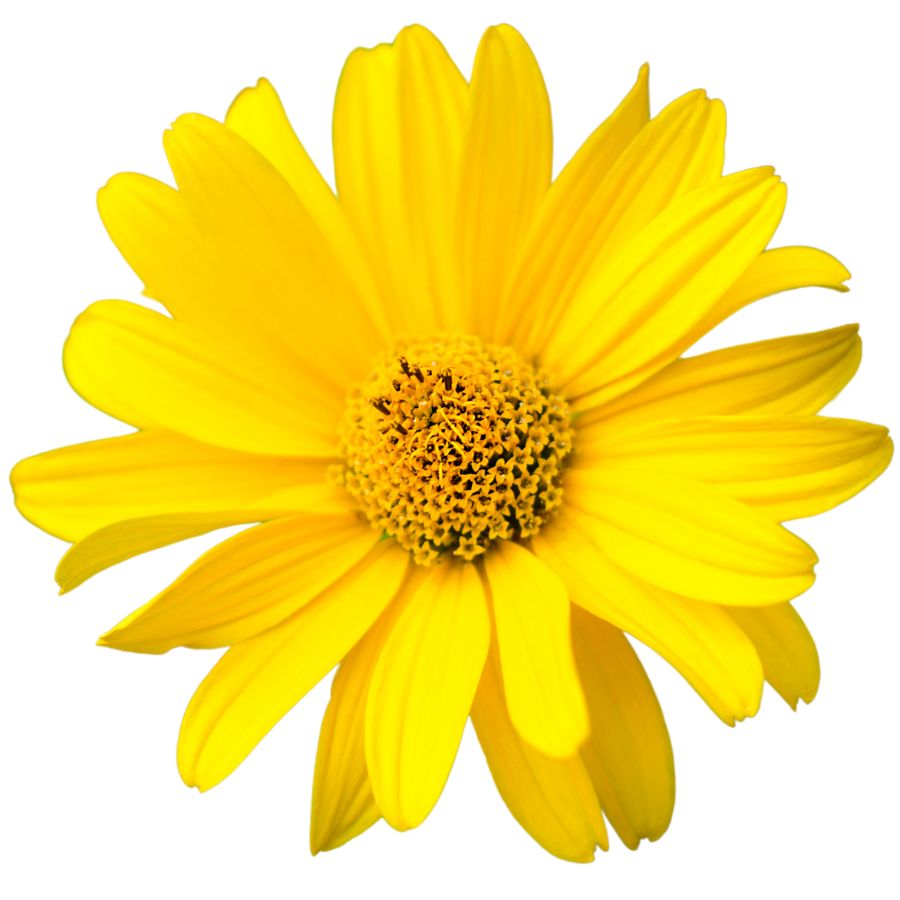
The Jerusalem artichoke is a sunflower relative that grows tall with bright yellow blooms and knobby, potato-like tubers underground. Its underground part is what you eat, while the stems, leaves, and flowers are best left alone.
What makes the tubers interesting is their crisp texture when raw and a nutty, slightly sweet flavor when cooked. They’re often roasted, pureed into soups, or sliced thin for chips.
Some wild sunflowers can look similar, but they don’t form the same type of tubers. If you’re not digging up a bumpy, tan root shaped like ginger, you’re not looking at the right plant.
People value Jerusalem artichokes for their culinary versatility and as a low-starch alternative to potatoes. They sell for a decent price at specialty grocers and farmers markets, especially when freshly dug.
Wild Bergamot (Monarda fistulosa)
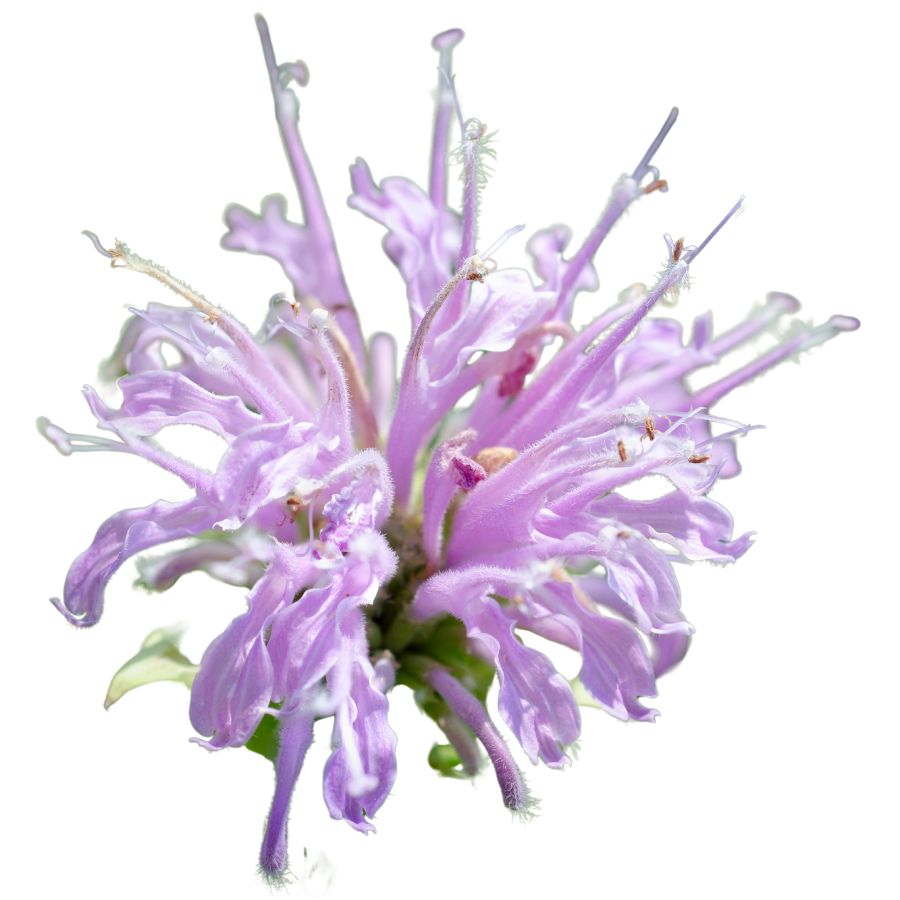
Wild bergamot, which also goes by names like bee balm and Oswego tea, has pale purple flowers that grow in tufted whorls and smell strongly when touched. The square stems and opposite leaves are a good indicator that you’re looking at a plant in the mint family.
The flavor is a mix of thyme and mint, and the texture is slightly coarse, especially when raw. People often use the flowers and leaves fresh in teas or dry them to store in jars.
It’s important to avoid confusing it with similar-looking mints that don’t have the same taste or safe track record. Some varieties of mountain mint, for example, have sharper scents and can cause digestive upset in larger amounts.
Even though it’s not a high-dollar herb, wild bergamot is valuable because of how much flavor you can get from just a few dried petals or leaves. That strong taste also means you don’t need much, which makes it last longer in the pantry.
Curled Dock (Rumex crispus)
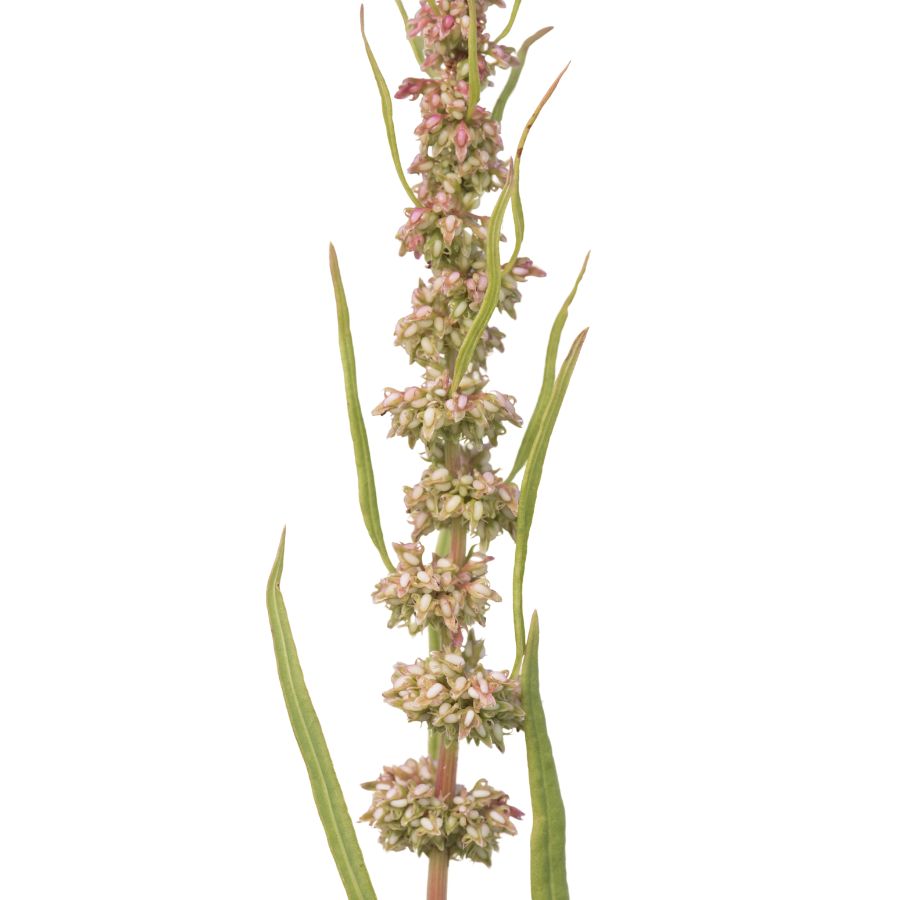
Curly dock grows in a tall, upright cluster with narrow, wavy-edged leaves and a deep taproot. You’ll often see the older seed stalks turn a rusty brown and remain standing even after the leaves die back.
The leaves are edible when young, with a tart, lemony flavor and a slightly chewy texture once cooked. Most people boil them in a few changes of water or sauté them like spinach.
You can also harvest the seeds, which look like small, papery brown hulls along the dried stalks. They’re edible too, but gritty and often ground into flour to mix with other grains.
Some dock species aren’t as palatable or safe, especially ones with broader leaves or harsh, acrid sap. Curly dock is generally safe in moderation, but it does contain oxalates, so it’s not a good idea to eat it in large quantities every day.
Cattail (Typha latifolia)
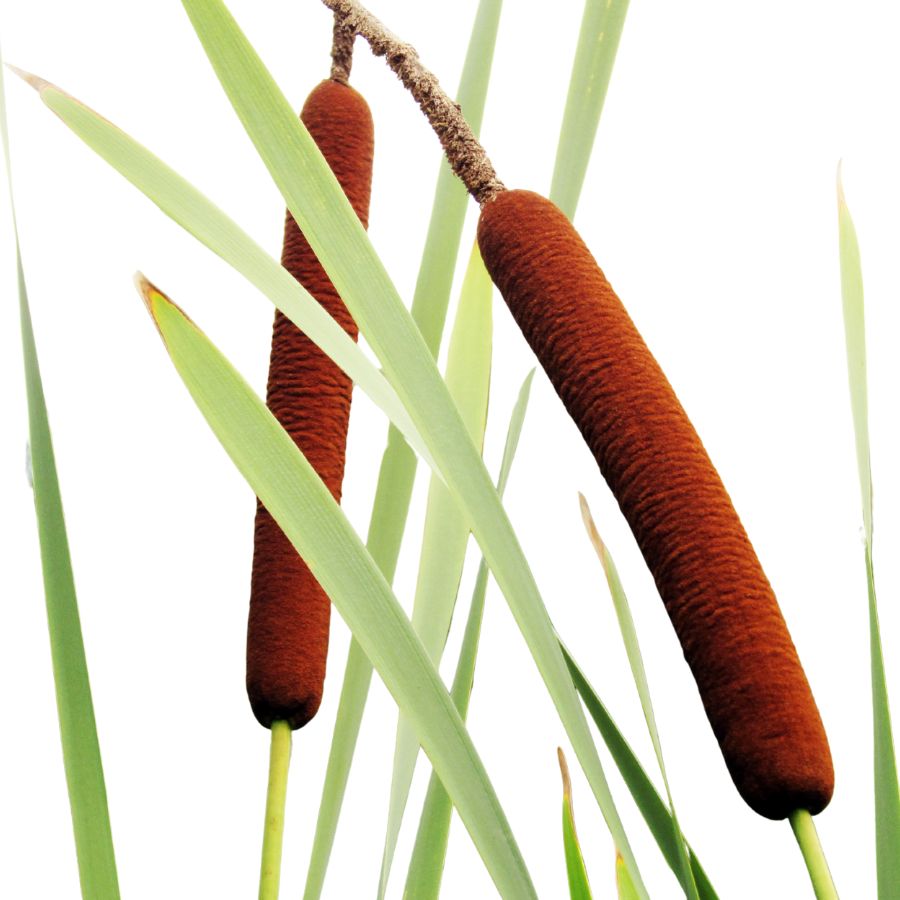
Cattails grow tall in shallow water and feature long, narrow leaves with brown, sausage-like flower heads that help identify them. You can eat the tender shoots, the young green flower spikes, and the starchy rhizomes underground.
The shoots are often compared to cucumbers or hearts of palm and can be used raw in salads. The flower spikes are more enjoyable when steamed or boiled before they toughen.
Rhizomes have more calories than the rest of the plant, but they’re fibrous and need to be cooked or processed into flour to be useful. Avoid picking anything that looks similar but lacks the brown flower head—iris and other lookalikes can be harmful if ingested.
Cattails aren’t sold for much commercially, but their abundance and the number of usable parts make them a solid wild food source. Foragers value them for how much food they provide from one plant, even if they won’t fetch a high price.
Black Walnut (Juglans nigra)
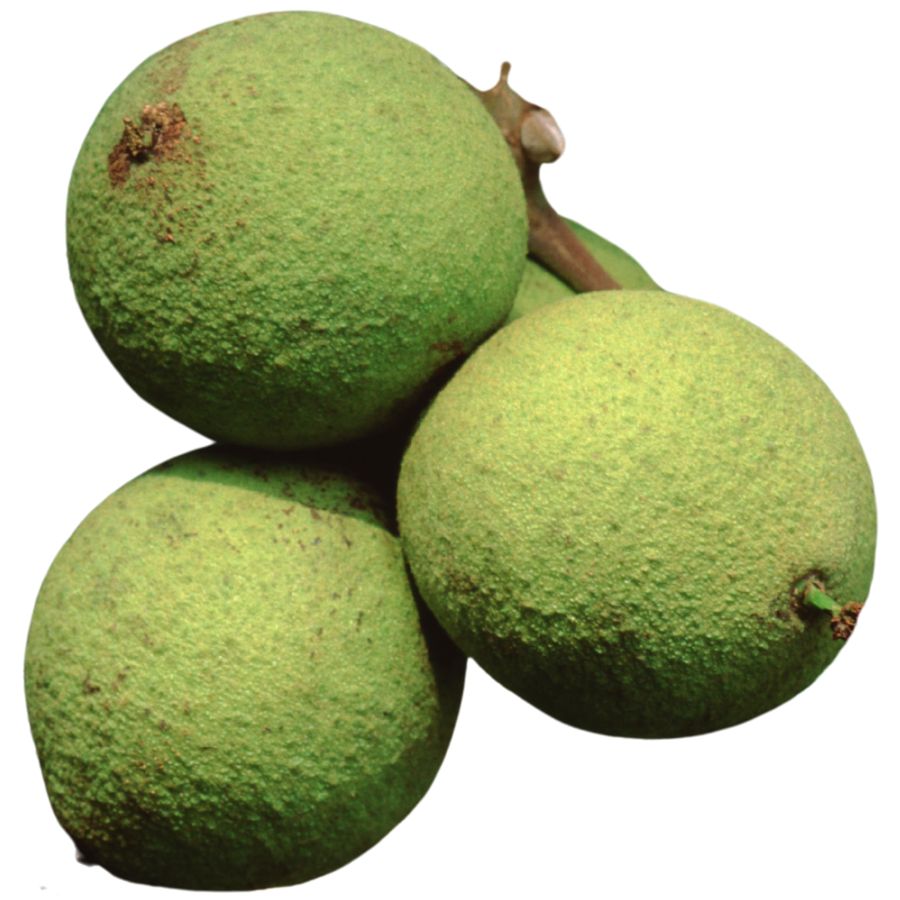
Black walnut grows a nut that’s prized for its strong, musky flavor and crunchy texture. The inner shell is extremely hard and often needs to be cracked with a vise or hammer to reach the oily, wrinkled seed inside.
Its nuts are most often roasted, chopped into desserts, or used in meat rubs and dressings. They’re also one of the few foraged tree nuts that can be stored long-term with very little processing.
The outer green husks leave a dark stain when bruised or broken open, and the nut itself is hidden inside a thick shell. While the fruit of the tree may resemble buckeye at first glance, black walnut leaves have a different shape and pattern, and buckeye seeds are toxic.
Prices stay high because harvesting takes time and experience, and the trees don’t lend themselves easily to large-scale production. Foragers and specialty food makers often pay a premium for wild black walnuts with intense flavor.
Elderberry (Sambucus canadensis)
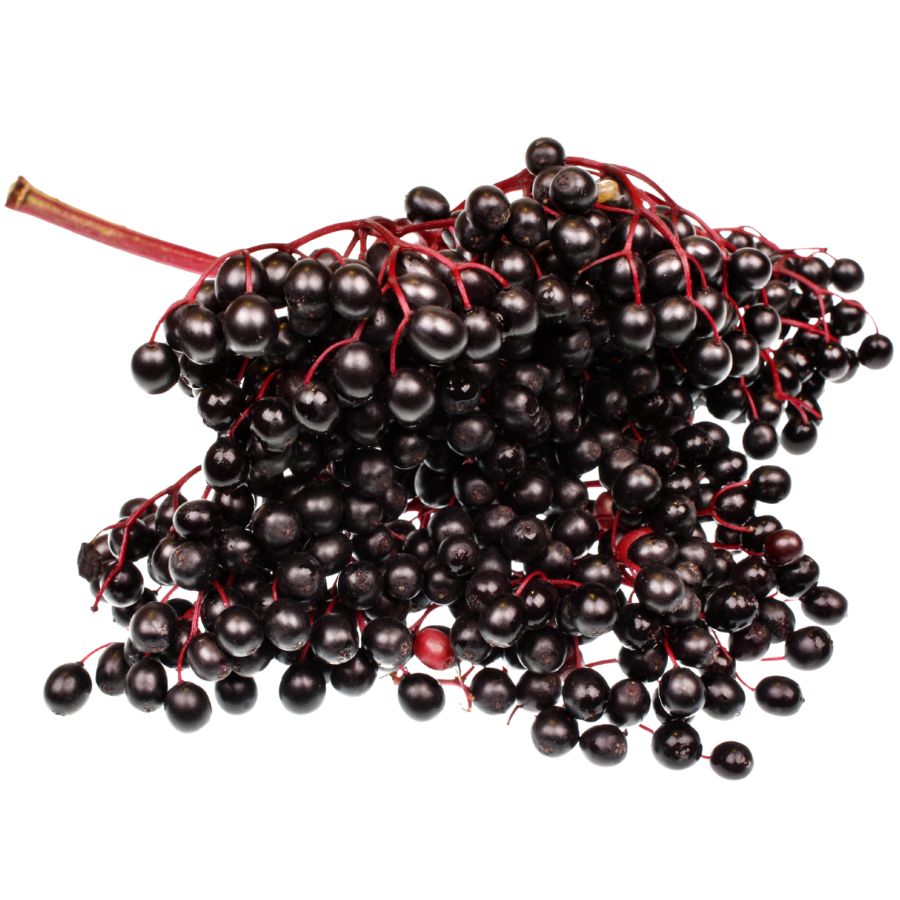
For centuries, elderberries have been gathered not just for food, but for making home remedies prized across the Southwest. Also called Mexican elder and tapiro, elderberry grows as a sprawling bush or small tree with clusters of tiny white flowers that turn into dusty blue-black berries.
There are toxic lookalikes you need to watch for, especially red elderberry, which has round clusters of bright red fruit. Elderberries grow in flatter, broader clusters and have a softer, more powdery appearance when ripe.
The berries have a deep, earthy flavor with a tart edge, and are usually cooked into jams, syrups, and baked goods to bring out their richness.
Make sure to avoid eating the raw berries, seeds, bark, or leaves because they can cause nausea unless they are properly cooked.
This plant stays valuable because the berries are used heavily in teas, tinctures, and syrups that people rely on for wellness, driving steady demand. Elderberries can also be dried and stored for months, making it even more profitable compared to foods that spoil quickly.
Smooth Rose (Rosa blanda)
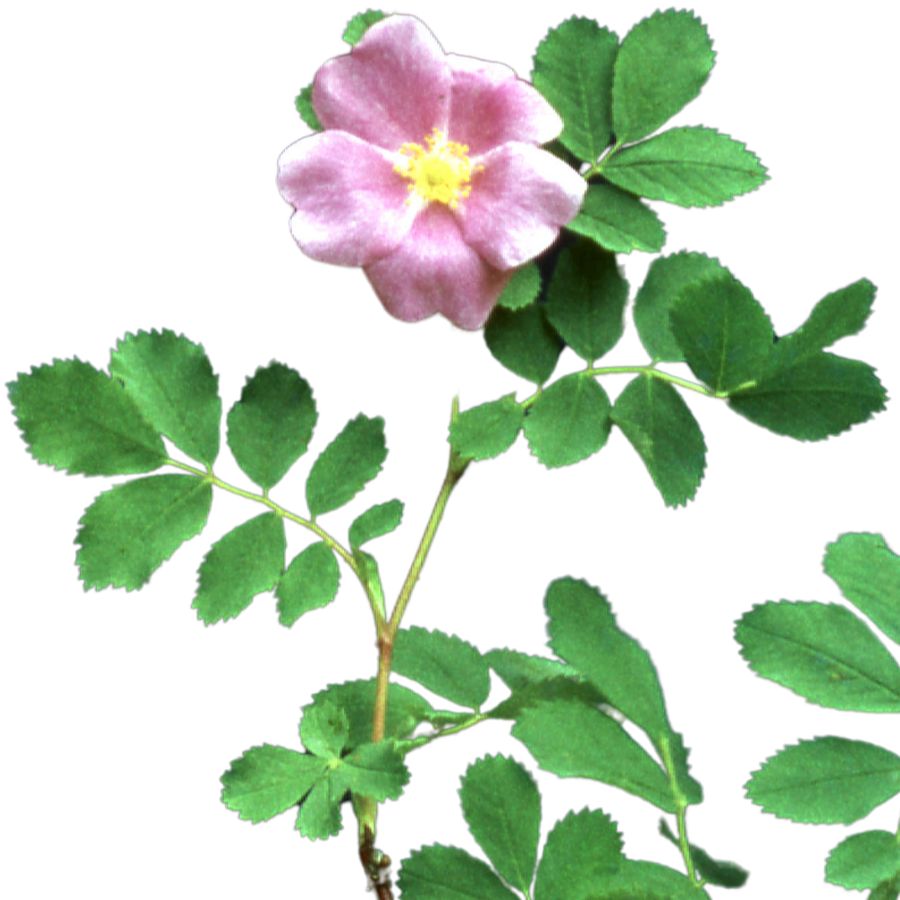
The hips of the smooth rose are edible and highly nutritious, often used in syrups or jellies thanks to their high vitamin C content. They’re firm and slightly acidic when raw, but mellow into a pleasant, fruity taste when cooked.
This wild rose has nearly smooth stems, unlike the heavily thorned varieties that often grow nearby. Its petals are broad and softly colored, usually pink, and the plant forms hips that are noticeably round and fleshy.
Always discard the seeds and inner fuzz before eating the hips, since they can cause stomach or throat irritation. While not a high-value crop, foraged hips may bring in modest returns when dried and packaged for teas or herbal blends.
Don’t eat the leaves or roots, and be cautious not to confuse the plant with rose species that have been treated with chemicals. Smooth rose is primarily valued by foragers and herbalists rather than commercial growers.
Maitake (Grifola frondosa)
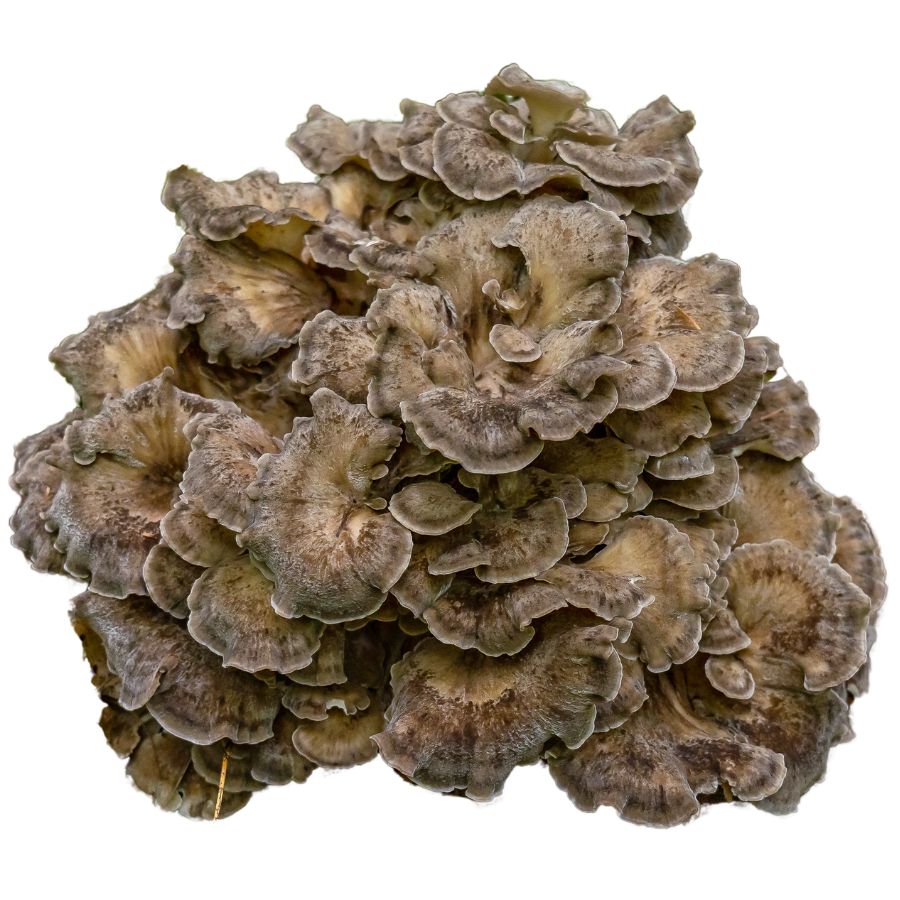
If you’ve ever found a large, leafy-looking mushroom near the base of an oak tree, it might’ve been maitake, also called hen of the woods. The lobes are soft, fan-shaped, and usually grow in a layered cluster that looks like brown petals.
Its flavor is strong and savory, and people often roast or fry it to bring out its concentrated taste. It’s firm when cooked, not spongy, and works well in grain bowls, stews, or simply on its own.
The whole fruiting body is edible, but the base can be fibrous and tough, so most people trim that part away.
While maitake does have a few lookalikes, like the umbrella polypore, most of them are thicker and less delicate in texture.
Fresh wild maitake can fetch high prices at specialty markets, and its shelf life improves dramatically when dehydrated. For those who forage or cook professionally, it’s one of the more valuable mushrooms to find.
Red Raspberry (Rubus idaeus)
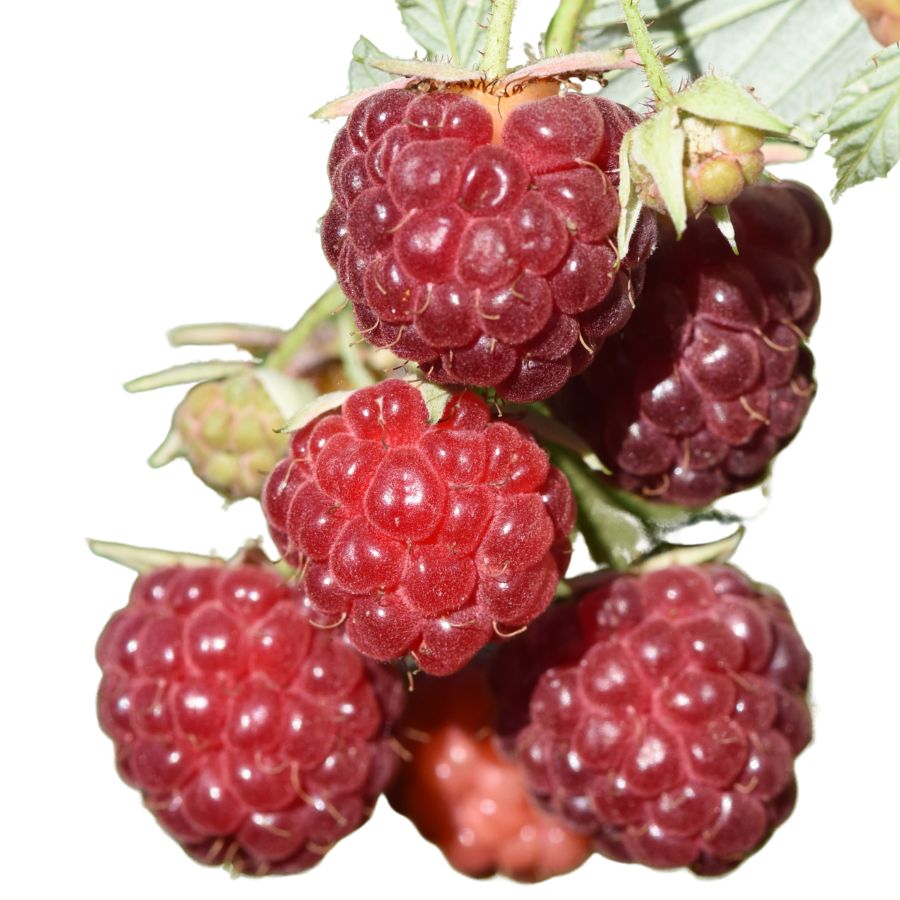
You’ll recognize red raspberries by their soft red drupelets and their hollow shape when picked. The canes are covered in fine prickles, and the leaves are toothed and pale underneath.
People usually eat the berries fresh or turn them into jams, syrups, or desserts. The leaves aren’t edible and are often ignored entirely.
Red raspberries can be mistaken for wineberries, which are more translucent and sticky. Another common mix-up is with black raspberries, which have a solid core and darker color.
They aren’t rare, but they’re still considered a premium fruit in local food markets and can be profitable in small harvests. Their delicate texture makes them harder to store or ship, which adds to their market appeal.
Sunflower (Helianthus annuus)
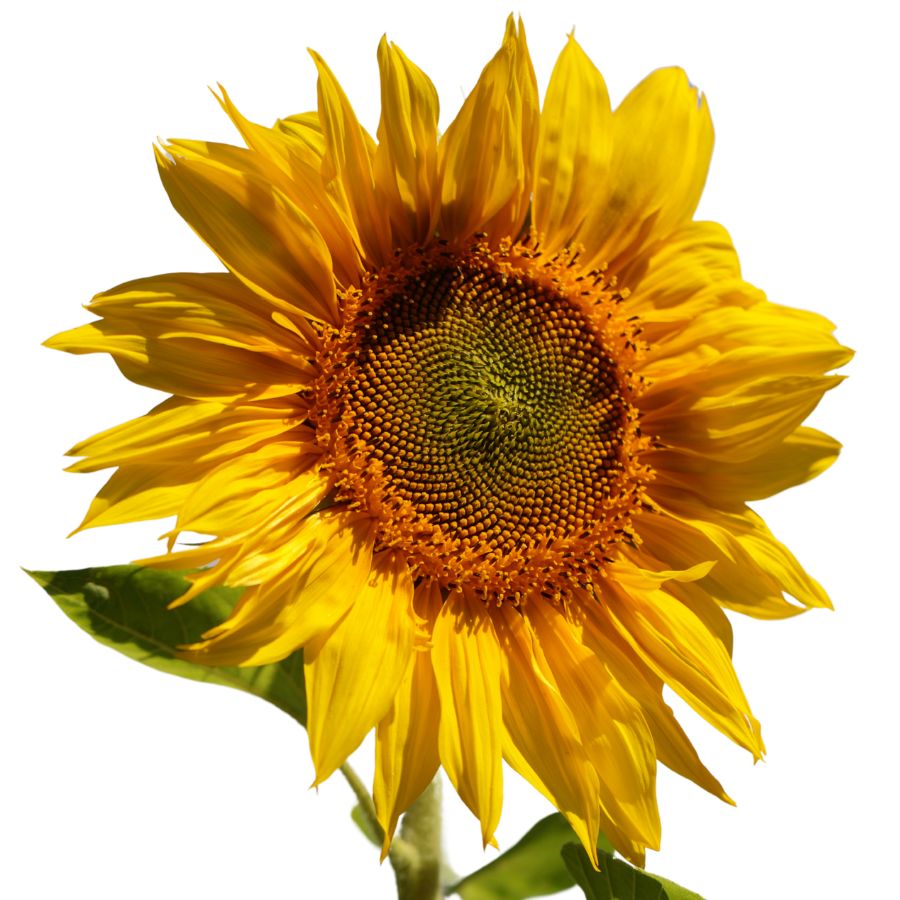
The tall, bright blooms of the sunflower aren’t just ornamental—this plant offers edible seeds with a mild, nutty flavor and a tender crunch when roasted. You can eat the seeds raw, toasted, or ground into sunflower butter, and they’re also pressed for oil that’s widely used in cooking.
What makes sunflower seeds valuable is their high oil content and protein, making them both nutritious and commercially important. The seeds can sell for a good price, especially in large-scale production or organic markets.
While the seeds and sprouts are edible, you should avoid the leaves and stalks, which are too fibrous and bitter to be useful. The seed head itself is also too tough to eat once matured.
Wild sunflower varieties do have some lookalikes, including certain types of daisies or ragweed, but only sunflowers produce large, seed-packed heads with thick, bristly centers. If you’re unsure, cracking open a flower head to check for developing seeds is a reliable indicator.
Where to Find Valuable Forageables in the State
Some parts of the state are better than others when it comes to finding valuable wild plants and mushrooms. Here are the different places where you’re most likely to have luck:
| Plant | Locations |
| Chokecherry (Prunus virginiana) | – Theodore Roosevelt National Park – Icelandic State Park – Pembina Gorge State Scenic Area |
| American Plum (Prunus americana) | – Turtle Mountain State Forest – Fort Ransom State Park – Prairie National Grassland |
| Morel (Morchella spp.) | – Little Missouri River corridor (TRNP) – Missouri River breaks near Mandan – Cottonwood creek areas in Medora (TRNP) |
| Giant Puffball (Calvatia gigantea) | – Audubon National Wildlife Refuge (Bismarck) – Chase Lake National Wildlife Refuge – Sheyenne National Grassland |
| Milkweed (Asclepias syriaca) | – Sheyenne River Valley Prairie (TRNP) – Pembina Gorge grasslands – Fort Ransom State Park prairies |
| Shaggy Mane (Coprinus comatus) | – Fort Abraham Lincoln State Park – Petersburg County Park trails – Theodore Roosevelt National Park grassy roadsides |
| Jerusalem Artichoke (Helianthus tuberosus) | – Sheyenne National Grassland fields – Arrowwood National Wildlife Refuge dikes – Long Lake National Wildlife Refuge field margins |
| Wild Bergamot (Monarda fistulosa) | – Sheyenne National Grassland meadows – Pembina Gorge wooded draws – Lake Metigoshe State Park prairie |
| Curled Dock (Rumex crispus) | – Lewis & Clark State Park roadsides – Cross Ranch State Park ditchlines – Lake Sakakawea State Park shoreline |
| Cattail (Typha latifolia) | – Chase Lake National Wildlife Refuge marshes – Arrowwood National Wildlife Refuge wetlands – J. Clark Salyer National Wildlife Refuge ponds |
| Black Walnut (Juglans nigra) | – Pembina Gorge riparian woods – Turtle River State Park floodplains – Lindenwood Park streambanks (Fargo) |
| Elderberry (Sambucus canadensis) | – Fort Ransom State Park willow draws – Theodore Roosevelt National Park lowland thickets – Fort Rice Wildlife Management Area shrubby areas |
| Smooth Rose (Rosa blanda) | – Lake Metigoshe State Park prairie edges – Icelandic State Park moraine slopes – Pembina Gorge trail edges |
| Maitake (Grifola frondosa) | – Turtle Mountain State Forest oak bases – Icelandic State Park hardwood ridges – Pembina Gorge oak stands |
| Red Raspberry (Rubus idaeus) | – Lindenwood Park ditchbanks (Fargo) – Sheyenne National Grassland meadow edges – Upper Souris National Wildlife Refuge shrublands |
| Sunflower (Helianthus annuus) | – Fort Stevenson State Park prairie restorations – Missouri Coteau grassland slopes – Lake Metigoshe State Park sunny fields |
When to Forage for Maximum Value
Every valuable wild plant or mushroom has its season. Here’s a look at the best times for harvest:
| Plants | Valuable Parts | Best Harvest Season |
| Chokecherry (Prunus virginiana) | – Berries | August–September |
| American Plum (Prunus americana) | – Fruits | August |
| Morel (Morchella spp.) | – Mushrooms | May–June |
| Giant Puffball (Calvatia gigantea) | – Mushrooms | August–October |
| Milkweed (Asclepias syriaca) | – Young shoots – Flower buds – Immature pods | May–July |
| Shaggy Mane (Coprinus comatus) | – Mushrooms | August–October |
| Jerusalem Artichoke (Helianthus tuberosus) | – Tubers | September–November |
| Wild Bergamot (Monarda fistulosa) | – Leaves – Flowers | July–August |
| Curled Dock (Rumex crispus) | – Young leaves – Roots | April–May (leaves) October–November (roots) |
| Cattail (Typha latifolia) | – Shoots – Pollen – Roots | May–June (shoots) June–July (pollen) September–October (roots) |
| Black Walnut (Juglans nigra) | – Nuts | September–October |
| Elderberry (Sambucus canadensis) | – Berries – Flowers | June (flowers) August–September (berries) |
| Smooth Rose (Rosa blanda) | – Rose hips | September–October |
| Maitake (Grifola frondosa) | – Mushrooms | September–October |
| Red Raspberry (Rubus idaeus) | – Berries | July–August |
| Sunflower (Helianthus annuus) | – Seeds | September–October |
One Final Disclaimer
The information provided in this article is for general informational and educational purposes only. Foraging for wild plants and mushrooms involves inherent risks. Some wild plants and mushrooms are toxic and can be easily mistaken for edible varieties.
Before ingesting anything, it should be identified with 100% certainty as edible by someone qualified and experienced in mushroom and plant identification, such as a professional mycologist or an expert forager. Misidentification can lead to serious illness or death.
All mushrooms and plants have the potential to cause severe adverse reactions in certain individuals, even death. If you are consuming foraged items, it is crucial to cook them thoroughly and properly and only eat a small portion to test for personal tolerance. Some people may have allergies or sensitivities to specific mushrooms and plants, even if they are considered safe for others.
Foraged items should always be fully cooked with proper instructions to ensure they are safe to eat. Many wild mushrooms and plants contain toxins and compounds that can be harmful if ingested.

